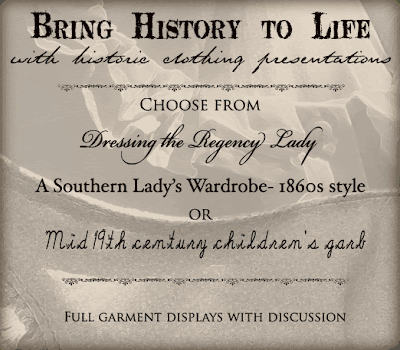 |
| Photograph by Irving Penn (The Getty Museum) |
If you have visited any of my sites recently, you may have noticed things look a little different.
Over the summer, I completely revamped and updated my Costume History Pages. This is a free historical clothing reference site dedicated to women and children’s clothing from 1790-1910.
I also rearranged my blog a bit- deleting some old posts and moving business related stuff to my website. I have decided to keep all business related stuff “in house.”
But never fear! I am keeping some of the more popular posts here and offering links to my business blog where you can find old entries in their entirety. I will continue to keep this Blog active with other nonbusiness historical clothing related stuff!
On a final note, I have a story I would like to share.
Last week I was contacted via email by an individual we will call “John” wishing to purchase a few items. “John” owns a business in the EU and requested an invoice be sent to his email. No problem. I do this all the time.
“John” did not want to use my current online e-commerce payment processor and wished to give me his credit card number via email. Again- No problem. This is not something out of the ordinary. Even though I am more comfortable accepting credit card transactions over the phone (for security reasons), seeing how he was in the EU, I was willing to make an exception.
Then it gets strange. Instead of completing the transaction, “John” emails me requesting that I not ship the items to him in the EU but instead he will send a shipping agent to my location to pick the items up. I responded that I do not offer private pick-ups but I would be happy to send the items to his shipping agent. “John” then requested that I charge his credit card double the amount of the merchandise and Western Union the difference to his shipping agent as compensation for his troubles.
????????????????
I responded I do not conduct transactions for third parties and I only process payments for actual merchandise sold including shipping. Therefore, if he was interested in completing the transaction, he needed to logon to my order form and use my current credit card processor to complete the transaction.
“John” sent me a few more desperate emails- which I did not respond to. He never provided a credit card number or completed the transaction- thank goodness because it was probably a stolen credit card number. Essentially, this was a revised version of the Nigerian Money Transfer Scam (also known as the 419 scam) and it is a multibillion dollar industry. (Contrary to the name, The NMTS does not always originate in Africa.)
Fortunately, I was smart enough to know something just wasn’t quite right early on and was on high alert. If I had indeed run “John’s” credit card number and Western Unioned the money to the so called “shipping agent,” once the credit card number came back stolen, I would have been liable for the entirety of the transaction. And what if I had indeed given “John” a pick up address? Even though no one would have ever shown up, it still frightens me to think those within this criminal network would have access to my location.













